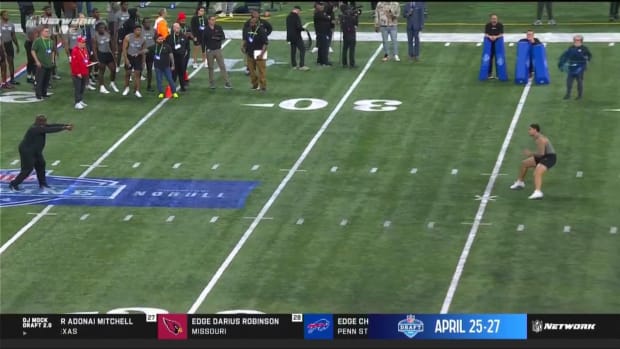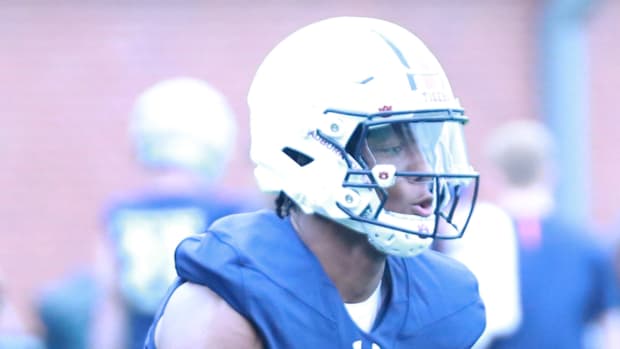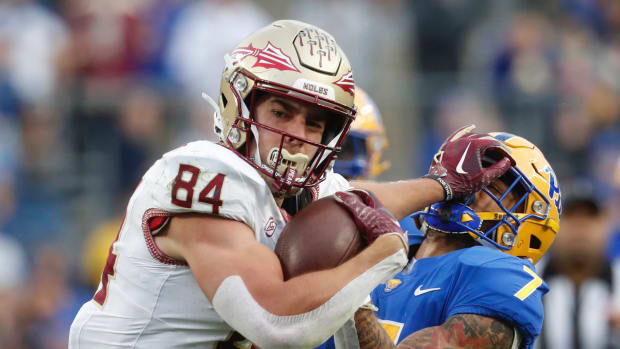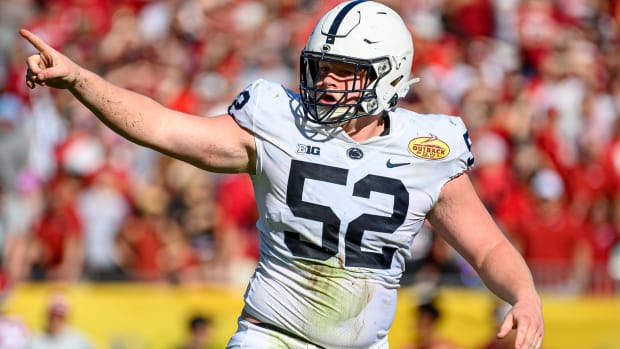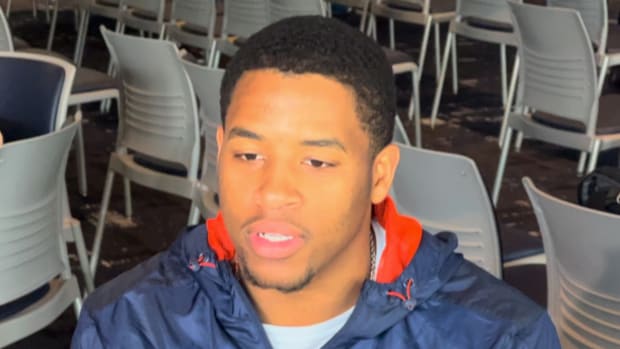Old-school has its advantages in college football
In the spread-happy world of college football that Oregon helped create, being old-school like Michigan State has its advantages.
The seventh-ranked Spartans, who visit the third-ranked Ducks on Saturday, are among a dwindling number of teams still using what can best be described as a traditional, pro-style attack featuring tight ends, fullbacks and the quarterback regularly taking a snap from under center.
The Ducks have been at the forefront of the spread revolution. Few teams do it as well as Oregon, though plenty are trying. The reaction from defenses has been to streamline personnel, using quicker and leaner players who can track down all those fast guys in the open field.
Now that the traditional has become unorthodox, teams such as Michigan State, No. 1 Florida State, No. 2 Alabama and No. 13 Stanford can benefit from going against the trend as opponents struggle to prepare for their bigger and more bunched-up offenses.
''I think it does become a little bit more difficult to simulate the things that we do in practice because of the nature of your personnel,'' Michigan State coach Mark Dantonio said. ''Your personnel begins to take on your offense's personality.
''If you can't simulate things very well throughout the week in practice and then you hit the game field, there's a difference in speed, there's a difference in physicality, in just the way different plays are run.''
For many programs, the best way to neutralize the talent advantage that teams such as Florida State and Alabama have is the spread. And spread offenses are even more prevalent in high school football than they are in college, which has helped trigger the explosion of the last decade.
In the Pac-12, where Oregon resides, the spread is just about everywhere outside of Stanford. Even Southern California, long a pro-style stronghold, is now dabbling in the spread with what new coach Steve Sarkisian calls a ''hybrid'' offense.
''When you practice all day against four wide receivers in training camp and then you show up to a game and there's the I-formation with a fullback and tailback, it takes some adjusting to it,'' Sarkisian said.
The Big 12 is even more spread-heavy, with Texas taking the most traditional approach.
''Talking to our defensive coaches, they don't see it (prostyle offense) much anymore so when they do face a traditional pro-style offense there's some new things that go into preparing for it,'' Texas Tech coach Kliff Kingsbury said.
The spread has swept through the Southeastern Conference in recent years with the additions of Texas A&M and Missouri, and the coaching arrivals of Auburn's Gus Malzahn, Mississippi's Hugh Freeze and Tennessee's Butch Jones.
A similar infiltration has happened in the Atlantic Coast Conference, with Larry Fedora at North Carolina, Dave Doeren at North Carolina State and Dave Clawson at Wake Forest.
Among the Big Five conferences, the Big Ten leans heaviest toward traditional offenses with Wisconsin, Iowa, Michigan and Rutgers among those joining Michigan State in running prostyle sets that can provide multiple formations.
There are two potential problems teams face when trying to prepare for pro-style offenses. First, there's the lack of offensive personnel.
''You can't emulate them in practice if you don't even have tight ends to throw in there,'' said former Auburn coach Gene Chizik, who is now working as an analyst for the SEC Network.
Of course, that can work both ways. No doubt Michigan State has had to get creative this week to prepare for Oregon.
The second problem is a lack of defensive personnel.
''I haven't seen it as much in our conference, but out of conference I've seen it a lot where you kind of tailor your entire defense to play against the spread so you've got smaller, lighter outside linebackers that are more like nickel guys that can kind of play the pass,'' Stanford coach David Shaw said. ''And then you come up against a team like us where you don't have a big outside linebacker to defend the fullback in the running game.''
For example, West Virginia of the Big 12 didn't have a linebacker on its depth chart for the Alabama game that weighed more than 235 pounds. The Mountaineers usually line up three safeties, with 210-pound K.J. Dillon at the Spur position, a hybrid of linebacker and safety.
That's a defense better suited to chase Texas Tech than knock heads with the Crimson Tide.
Of course, Alabama also has the benefit of having awesome players. Talent generally trumps schemes.
''Nick can run pretty much whatever offense they want to run because he does such a wonderful job recruiting some of the best players in the country,'' Kansas coach Charlie Weis said.
While coaches might try to blend more of the traditional power running game into their spreads, the way Malzahn does at Auburn, don't expect a retro movement toward pro-style offenses anytime soon.
''I think that for the majority of the teams, it's a long way from cycling back the other way,'' said Weis, the former NFL offensive coordinator. ''Everything goes in cycles in football and it's not going to shock me if somewhere down the road teams take that tact, but I think we're a long way away from that.''
---
AP Sports Writer Antonio Gonzalez in Stanford, Calif., contributed to this report.
---
Follow Ralph D. Russo at www.Twitter.com/ralphDrussoAP

